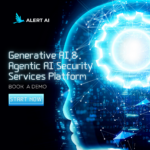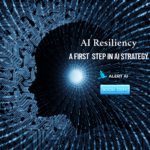What is AI Security Observability and AI Security Resilience?
What is AI Security Observability and AI Security Resilience?
AI Security Observability is the capability to understand the state of AI system and Security Intelligence Indicators of compromise, attack, Proactive Threat modelling by analyzing its user, system prompts, responses, AI access. Model logs, AI metrics, and AI traces, Agentic AI Tool calling, response, RAG query, results.
It goes beyond traditional monitoring by providing deeper insights into AI system behavior, performance, and potential security threats. By leveraging AI observability, organizations can improve their AI Security posture, detect and respond to AI Threats faster, and ultimately ensure the AI Resilience of their systems.
Key Benefits of AI Security Observability:
-
Faster Incident Detection and Response:
Security observability tools enable faster identification of security breaches and faster response times by providing a comprehensive view of system behavior and potential threats.
-
Improved Threat Hunting:
Security teams can use observability data to proactively hunt for threats, identify suspicious patterns, and detect advanced persistent threats (APTs).
-
Reduced Mean Time to Resolution (MTTR):
By providing detailed insights into system behavior, observability helps security teams quickly identify the root cause of security incidents and resolve them more efficiently.
-
Enhanced Security Posture:
Security observability provides a holistic view of the security landscape, allowing organizations to identify vulnerabilities, misconfigurations, and other security risks before they can be exploited.
-
Compliance and Auditing:
Observability solutions can help organizations comply with various security regulations and standards by providing audit trails and detailed information about system behavior.
How it Works:
Key Use Cases:
By analyzing AI access, events, AI tool calls, inputs, responses, metrics, AI incident, AI logs, and AI traces, security teams can identify vulnerabilities in AI applications and AI services and take appropriate action to mitigate the risks.
-
Monitoring AI Tool or AI User behavior:Agentic AI, GenAI Observability can help track user AI activity and identify potential malicious behavior by analyzing prompts, user inputs, content, responses, query, results, Tool calling, response and other relevant AI data interactions
-
Identifying compromised AI Systems:
By analyzing AI Incidents, AI footprint , security teams can detect compromised AI systems and take steps to isolate and remediate the AI issues and potential breaches ahead.
-
Improving security posture:By providing a comprehensive view of the AI security landscape, AI observability helps organizations identify areas of weakness and improve their overall AI Security posture.
What is AI security resilience?
AI security resilience refers to the ability of an AI system to withstand, adapt to, and recover from security incidents or disruptions without compromising its functionality or operational integrity. It encompasses a system’s capacity to endure attacks, maintain performance, and continue operating effectively even when facing threats.
The ability of an AI system to withstand attacks without performance degradation or functional changes. This includes preventing unauthorized access, manipulation, or misuse of the system.
-
Adaptation and Recovery:
The capacity of an AI system to adjust its operations in response to attacks or disruptions, ensuring continuity and minimizing downtime. This might involve switching to backup systems, modifying algorithms, or implementing new security protocols.
-
Structural and Functional Adaptations:
AI systems should be able to reconfigure their structure or alter their functionality to maintain operational capacity during and after disruptions.
-
Multidimensional Resilience:
AI resilience is not just about security; it also includes operational resilience (dealing with system failures) and ethical resilience (ensuring the system’s actions align with ethical guidelines).
-
AI Governance:
Strong AI governance, including AI policies, and regular model vulnerability scans, is crucial for maintaining AI security resilience.
Why is AI Security Resilience Important?
-
Protecting AI Systems:
As AI systems become more integrated into critical infrastructure and business processes, their security resilience becomes vital for preventing disruptions and maintaining trust.
-
Mitigating AI Data Leakage:
AI systems can be targeted by cyberattacks, and ensuring their resilience helps organizations withstand these threats and minimize potential damage.
-
Ensuring Business Continuity:
By enabling AI systems to adapt and recover from security incidents, organizations can maintain business continuity and minimize downtime.
-
Preventing Ethical Lapses:
AI security resilience also encompasses ethical considerations, ensuring that AI systems do not compromise ethical standards or human values during or after attacks.
AI Security Resilience in Practice:
Alert AI “Secure AI Anywhere” Zero-Trust AI Security gateway helps Organizations with AI Security, Observability, Resilience with
Implementing a AI security model that assumes no implicit trust and verifies all users and systems continuously.
AI Access Policies
Block, Allow access to Agentic AI and GenAI interactions with Data and API, Tool calling.
Developing specific procedures for responding to AI security incidents, including containment, investigation, and recovery strategies.
Integreated with full AI SDLC to identify, classify, and prioritize vulnerabilities in AI systems and automate the patching process










